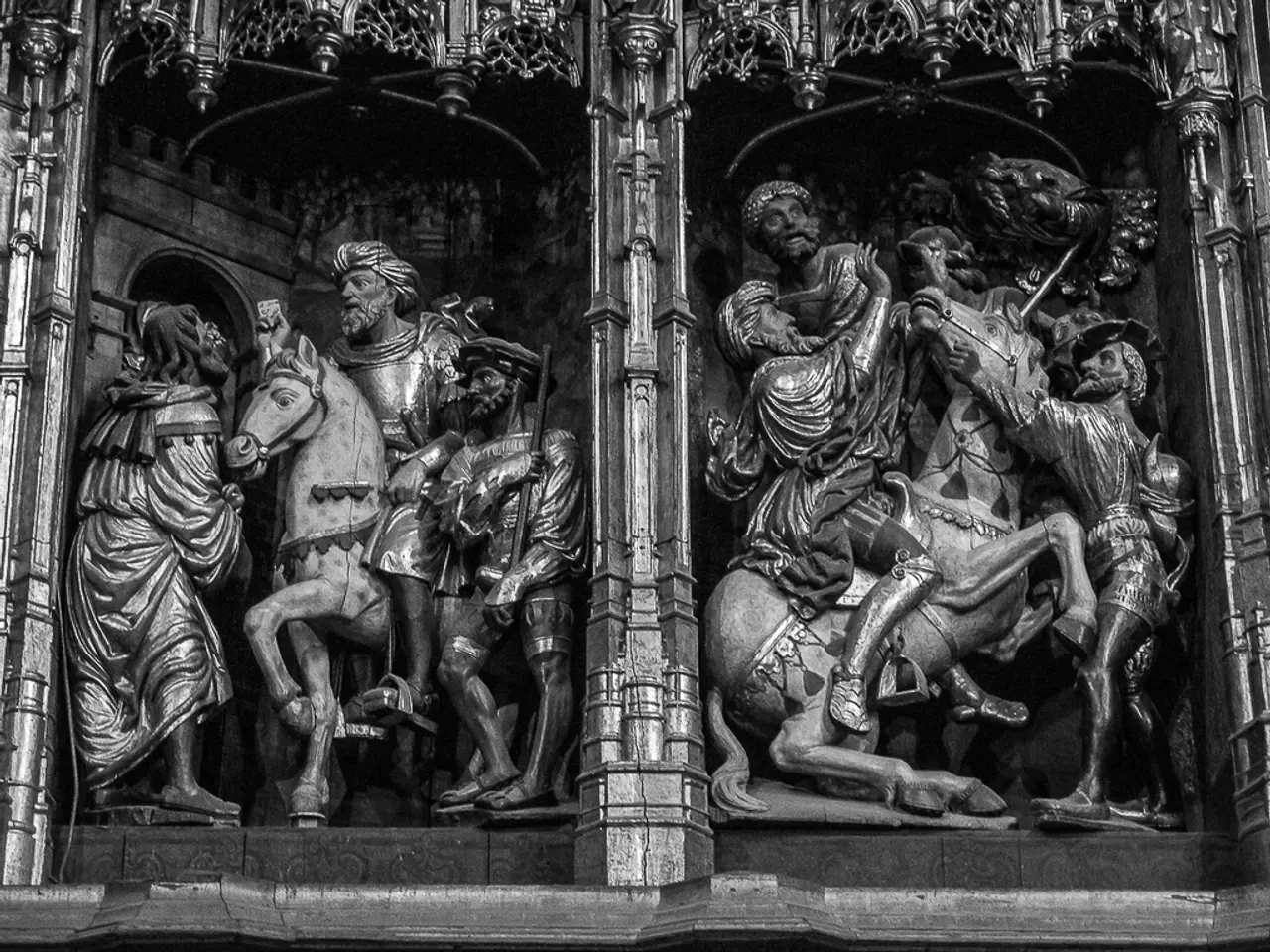Artificial intelligence hasn't yet managed to produce a royal portrait that exudes anything but an unsettling vibe.
In the heart of Geneva, during the AI for Good summit hosted by the United Nations, a significant event took place. The unveiling of "Algorithm King," a new portrait of King Charles III, created by the robot artist Ai-Da.
Ai-Da, a unique creation devised in Oxford, built in Cornwall, and programmed internationally, chose a specific image of King Charles, taken during diplomatic duty, as the basis for "Algorithm King." The painting features force lightning-esque blue brush strokes, giving it a striking resemblance to a certain Star Wars character, Emperor Palpatine.
The creation of "Algorithm King" was a meticulous process. Ai-Da analyzed multiple images of King Charles, did sketches and preparatory paintings, and built up the image in multiple layers using her AI algorithms and robotic arm. The final version was enlarged to make the final 3D textured image.
"Algorithm King" is not just a technical marvel, but also a work of art. It includes finishing brush strokes, and despite its unique style, it manages to capture the essence of King Charles III. It is a sequel to Ai-Da's earlier painting of Queen Elizabeth II.
The AI for Good summit is focused on identifying innovative AI applications, building skills and standards, and advancing partnerships to solve global challenges. "Algorithm King" was one of the most notable attractions at the event, showcasing the progress AI art has made in recent years.
However, it's important to note that while AI art techniques have generally improved in quality and subtlety, there is no documented or cited evidence directly confirming an improvement in non-creepy likenesses of English monarchs, particularly since AI-Da’s portrait of King Charles III. The question remains open pending future critical and technical evaluations of AI portraiture specific to English royalty.
As AI art generation progresses, it's becoming necessary to learn how to spot AI images. This is reflected in the growing public and regulatory awareness around AI-generated content, especially with UK laws addressing AI-produced harmful images since early 2025.
Despite the uncertainty about the future of AI-generated royal portraits, "Algorithm King" stands as a testament to the potential of AI in art. The first officially commissioned AI Royal portrait may still be a ways off, but with advancements in AI art generation, it's an exciting prospect to consider.
- Ai-Da's creation, "Algorithm King," draws influence from Star Wars' Emperor Palpatine due to its distinct blue brush strokes.
- The "Algorithm King" painting, showcased at the AI for Good summit, captured the essence of King Charles III while also displaying finishing brush strokes.
- To create "Algorithm King," Ai-Da utilized her unique combination of AI algorithms, robotic arm, and traditional 3D texturing techniques.
- As a sequel to her earlier painting of Queen Elizabeth II, "Algorithm King" was meticulously crafted from sketches, preparatory paintings, and multiple layers of rendering.
- The event, focused on advancing AI applications, demonstrated the recent advancements in AI art, with "Algorithm King" being one of the most remarkable examples.
- Under the UK laws implemented since early 2025, there is growing public and regulatory awareness concerning the recognition of AI-generated content, particularly in the realm of art.
- While the quality and subtlety of AI art techniques have improved significantly, the question remains about the improvement of non-creepy likenesses, specifically in AI portraits of English monarchs, like King Charles III.




